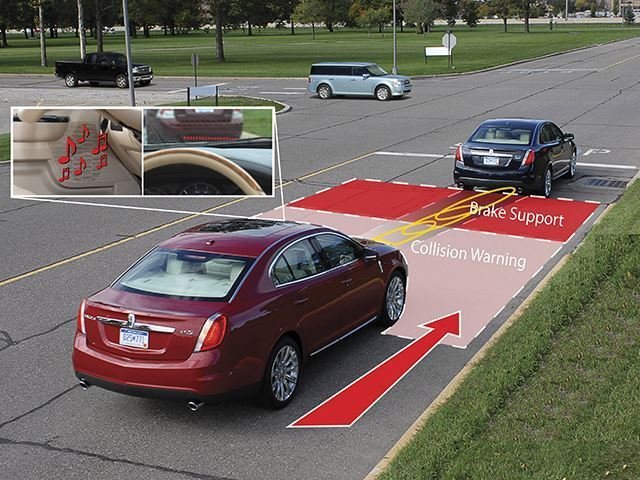These Are The 5 Features We Can Expect To See In The Cars Of 2017

While some are a direct result of government regulations, most will come to light during the year (or at least be announced as options on future models during 2017) due to the natural rate of technological innovation.
1) One of the most interesting changes we've noted in the cabins of the 2017 model year vehicles we have been testing is the rise of the self-parking feature. No longer is a robotic parallel and perpendicular parking master at the helm of massive BMW 7 Series or Mercedes S-Classes, now it's the lower trim models that are getting the same treatment. Recently we've driven a Ford Explorer, Volkswagen Passat, and even a Toyota Prius with such a feature, the latter two of which came in at under $34,000. While these two represented higher trim models, the fact that these can optioned in non luxury passenger cars shows us that these systems are about to become a lot more common.
2) By 2022, the NHTSA has mandated that all cars and light trucks sold within US borders must have auto braking systems as standard to help mitigate the 80% of accidents that involve a driver that's distracted in one way or another (as estimated by the California Office of Traffic Safety). Naturally, this means that around the same time, adaptive cruise control will become standard across the board given that the hardware for such systems will already be in place thanks to the above-mentioned mandate. One issue we see with this is that the systems aren't yet perfect given that they don't take cars in adjacent lanes into account. Hopefully this changes in 2017.
3) A recent study conducted with the partnership of nine major automakers found that we are still behind a big learning curve regarding the mass production of lightweight composites in cars. As fuel economy standards rise while cars gain more complex hardware, manufacturers will have to make it to the other side of that curve and get there one innovation at a time. BMW is already on its way there thanks to extensive research on layering aluminum, carbon fiber, high strength plastics, and high strength steel onto its chassis to make stiff but light cars. We'll see more automakers adopt these strategies in the near future while on the surface, we can at least expect more SUVs and trucks to gain aluminum bodies.
4) While the shift will likely not occur in electric cars, vehicles with gasoline engines will begin to adopt minor bits of active aerodynamic components in order to exploit the fuel-saving benefits of playing well with the wind. We're already seeing this with active grille shutters, which stay closed when the engine isn't huffing and puffing for air but open if more cooling is needed. When closed, drag is reduced considerably, which saves gas on the highway. The technology itself has been around for decades and is far from groundbreaking, but as automakers struggle to squeeze every last mile out of a gallon of gasoline, we'll see these small aerodynamic additions, once considered afterthoughts, become more prevalent in modern cars.
5) Partially because of the need to reduce engine load and save gas and also in part because automotive technology is becoming more complicated, we'll be seeing the 48 volt system gradually replace the 12 volt system in the modern automobile. These systems could power beefed up starters that enable better engine stop/start systems, run the accessories usually driven by the belt, and help sophisticated suspension systems better adapt to the road ahead. Mercedes has already announced that it would be installing these systems in some of its new cars to help handle all of the power hungry luxury features. Don't be surprised if other automakers follow suit in 2017.
Related News
